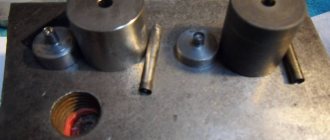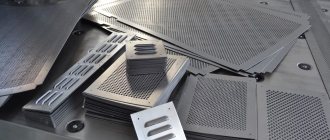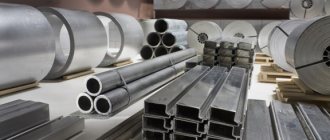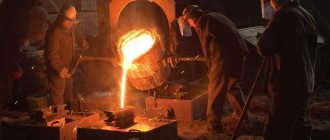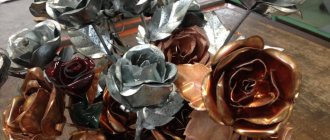| For stamping brass, universal stamping presses with high productivity are used. Brass is a fairly ductile metal, which makes it possible to manufacture parts with high structural complexity from it. The production of some of them requires the sequential performance of several operations on presses of different forces. |
| Brass stamping is carried out at the Bogorodsky plant using a number of special presses, which are formed into production lines. The latter are connected by conveyors, which makes it possible to minimize the time spent on the production of a particular batch of products. Quality control of products is carried out at all stages of their production, which determines the low level of defects in our products. |
| Brass stamping is done using hot and cold methods. For hot stamping, blanks with square and round cross-sections are used, for cold stamping, sheets cut to the required size are used. Further processing of brass is minimal, which means that products made from this metal can be delivered to the customer in a short time. |
details
Alloyed, heat-resistant steels and aluminum alloys
Submit your application
- 1
Casting from aluminum and heat-resistant alloys - 2
Hot stamping of parts
Our production specializes in the manufacture of parts from aluminum, nickel and heat-resistant alloys
We will make model and casting equipment ourselves and carry out heat treatment. We guarantee high quality products. All products have certificates issued based on testing in the company’s laboratory.
Advantages
01
COMPLIANCE WITH DEADLINES AND QUALITY CONTROL
Software and automatic tool changing reduce time and waste
02
QUICK COST CALCULATION
We usually need only 1-2 days to make a preliminary calculation of the cost of the part according to the drawing
03
WE PROVIDE A FULL COMPLEX OF SERVICES
Our specialists will work with you at all stages of production - from the development of drawings and foundry equipment to quality control of finished parts
Is it possible to quickly produce custom brass products?
This question is often asked to our consultants by customers who, as they say, are pressed for deadlines.
For them, the speed of stamping brass products comes first. If you also need urgent processing, we can reassure you: it is quite possible. Especially if you already have a ready-made stamp of the future part in your hands. Modern production facilities, including our metalworking shop, are equipped with high-performance equipment for producing any number of parts. And the actual operation of hot stamping of brass is carried out by even “mid-range” factories many times faster than forging. Our CNC-equipped equipment makes the process much faster and easier.
We can
Stamping production
We produce high-quality parts that meet Russian and international standards with heat treatment of workpieces weighing from 0.1 to 15 kg. Forging dimensions with a diameter of up to f280 mm deviation tolerance +-0.3 +- 1.9 mm (depending on the stamping dimensions) Materials: carbon, alloy, heat-resistant, aluminum steels and alloys.
Find out more
Forging production
Wide range of workpieces weighing from 0.1 to 150 kg. Heat treatment. Weight of forgings up to 150 kg Dimensions-diameter up to f 500 mm. Deviation tolerance +- 2.0 +-6.0 mm. (depending on the dimensions of the forging) Materials: carbon, alloy, heat-resistant, aluminum steels and alloys.
Find out more
Foundry
The minimum permissible wall thickness of aluminum castings is 3 mm; The weight of produced aluminum castings is from 20 g to 50 kg; Surface roughness of castings according to GOST 2789-73 Ra = 4 - 20 microns; Accuracy class of the resulting aluminum castings according to GOST R 53464-2009: 6-10.
Materials: alloyed, heat-resistant steels and aluminum alloys.
Find out more
DO YOU HAVE A TASK? WE WILL IMPLEMENT IT INTO LIFE!
Our specialists will calculate and prepare all technical information. Just an IDEA from you!
The terms of cooperation with us are simple:
1
Application
Send drawings with technical specifications to [email protected]
or a sample of the product;
2
Calculation
Our specialists will analyze your drawings and also calculate the cost of materials and work for your task;
3
Coordination
Concluding an agreement, issuing an invoice, paying an invoice;
4
Manufacturing
Production of equipment;
5
Production
Manufacturing of parts, post-operative and final quality control of each product;
6
Delivery
We ship and deliver finished products;
Features of stamping products made of brass and copper
Brass as a material belongs to the group of heavy non-ferrous metals - as opposed to aluminum, duralumin and alloys containing magnesium.
Since the main component of brass is copper, this alloy is close to it in many respects. However, due to its natural fragility, pure copper cannot be forged and stamped, and even being alloyed, it does not tolerate this operation well. But stamping brass products is a possible operation, and it does not have many contraindications. A special place among brass alloys is occupied by the so-called “malleable”: 59% of its composition is copper, 45% is zinc, and a very tiny share, up to a percent, remains for lead. Alloys that do not contain the latter component also tolerate stamping operations well.
Business plan for the production of a brass medallion by stamping
The tradition of awarding medals has existed since ancient Rome. Today, the award system is present in many areas of human activity.
The award (medal, badge) can have a geometric or arbitrary shape. Inscriptions and images can be applied to the front (obverse) and back (reverse) sides. The product also has a grooved edge. Modern equipment and materials make it possible to produce medals and orders in different ways, each of which depends on the type of purpose of the award. These can be sports, military, gift, award medals, crosses, as well as badges and tokens.
Casting method
This type of production is used for signs with complex patterns. The process is quite labor-intensive and takes a lot of time. Models of the future form are made of metal or wax. Metal molds are made using special machine tools. Small elements are finished by hand. Molten metal is poured into a mold of two halves. After some time, the workpiece will harden and can be taken out for further processing. The next stages are sanding, painting, galvanizing. Galvanization involves degreasing the surface, etching, cleaning and applying various metals. If necessary, coat with enamel. In this way, medals with a block and ordinary ones are cast, from jewelry and non-ferrous metals (copper, bronze, nickel, silver, gold). The advantage of the method is the ability to make exclusive awards, tokens, badges of any shape. Disadvantages include high cost and small circulation.
Stamping
A fast and inexpensive way to produce medals in large quantities. The stamp is made according to the model’s sketch; it will exactly repeat the declared design. The metal is placed on a matrix and the products are minted using a multi-ton press, then cut from the blank sheet. The surface is coated with galvanic gold, bronze or painted with enamel. You can produce school medals, souvenir medals, and tokens in this way. Most often, the materials chosen are brass, tin, copper, and aluminum. The method allows for large production runs. Disadvantage: Difficult to reproduce fine lines and patterns.
Hot enamels method (cloisonne)
Awards made using this technology look the most rich and beautiful. The cloisonné method involves applying natural enamels followed by annealing. Copper is considered the best material. During the production process, many defective products occur, so the cost of the finished medal is high. This method is used to make state awards.
Epola method
This is a cheap imitation of cloisonné. The main difference is the chemical composition of the enamels used. But this allows you to expand the palette of shades, because natural enamels are limited in colors. You can also see the difference in the picture. The hot enamels (cloisonne) method allows you to create three-dimensional designs, and synthetic enamel fills depressed depressions, creating a smooth surface.
Sheet stamping of aluminum and other metals
Professional machine stamping of sheet blanks is a fairly young technology: its first successful experiments date back to the 90s of the 19th century. However, it developed very quickly: after just 20 years, single operations on disparate equipment began to give way to work on assembly lines. And in the 20s of the twentieth century, methods of anti-corrosion protection of stamped products were tested and successfully introduced into production.
Modern stamping of sheet aluminum is carried out on high-tech stamping presses. The choice of sheet processing technology depends on their thickness.
Application area
Liquid stamping is applicable at any enterprise, regardless of the direction of the main activity. This technology is suitable for creating monolithic and variable configurations.
Liquid and semi-liquid stamping is suitable for creating:
- Round and rectangular flanges;
- Gear;
- Guide blocks and rollers;
- Gear and worm wheels;
- Valov;
- Components of various mechanisms;
- Lids and boxes.
Cold stamping of aluminum
Aluminum workpieces are cold stamped without heating. And the thin-sheet metal “excellently” withstands the flexibility test, which is prepared for it by two main participants in the process - a stationary matrix and a movable punch.
This type of processing is understood not as one operation, but as a whole complex of actions that can be conditionally defined as separating and form-changing. Under separating influences, the workpiece changes shape due to cutting, cutting, punching and other methods of separating a part from the whole.
Cutting is performed on various equipment: from mechanical scissors to a laser machine. The cutting line of the workpiece can be either straight or figured. The tool for punching is a punching press. After its passage, holes appear on the future part. Punching is used to produce blanks with a formed closed contour.
The form-building operations of cold stamping of aluminum are much more diverse. These include:
- flexible,
- twisting,
- hood,
- relief molding,
- crimping, etc.
Liquid metal stamping
Liquid metal stamping is one of the progressive technological processes that makes it possible to obtain dense workpieces with reduced machining tolerances and high physical, mechanical and operational properties.
The technological process of stamping liquid metal combines the processes of casting and hot stamping.
The process consists in the fact that the melt, poured into the mold matrix, is compacted with a punch mounted on the slide of a hydraulic press until solidification is complete.
The mating of the punch and matrix forms a closed shaped cavity. The outer contours of the workpiece are obtained in a split form if the part has external protrusions, or in a permanent form if there are no protrusions. Internal cavities are formed by inserting a punch into the liquid metal.
After removal from the mold, the workpiece is subjected to various types of processing or used without further processing.
Under the influence of high pressure and rapid cooling, gases dissolved in the melt remain in solid solution. All shrinkage voids are filled with unsolidified melt, as a result of which the workpieces are dense, with a fine-crystalline structure, which makes it possible to manufacture parts operating under hydraulic pressure.
Using this method, it is possible to obtain complex workpieces with various shaped bosses on the outer surface, significantly beyond the main overall dimensions of the part. Holes can be produced in workpieces located not only along the movement of the punch, but also in the perpendicular direction.
It is possible to press metal and non-metallic reinforcement into workpieces.
The process is used to produce shaped blanks from pure metals and alloys based on magnesium, aluminum, copper, zinc, as well as ferrous metals.
Volumetric cold stamping
Cold volumetric stamping is performed on presses or special cold stamping machines. Its main varieties are: upsetting, extrusion, volumetric molding, embossing.
Disembarkation
– formation of local thickenings of the required shape on the workpiece as a result of upsetting of its end (Fig. 15.1).
Fig. 15.1. Disembarkation scheme
The workpiece is usually a cold-drawn material in the form of a wire or rod made of ferrous or non-ferrous metals. Upsetting is used to produce standard and special fasteners, cams, gear shafts, electronic equipment parts, electrical contacts, etc.
The length of the planted part is calculated taking into account the volume of the required thickening according to the formula:.
The number of transitions is calculated mainly based on the ratio of the length of the planted part to the diameter of the workpiece, which characterizes the resistance to longitudinal bending. When using one transition, when using two transitions, when using three transitions. With a large number of transitions, the metal becomes stronger, so annealing is required.
The sequence of transitions in the manufacture of parts is shown in Fig. 15.2.: for three transitions (Fig. 15.2.a); for five transitions (Fig. 15.2.b).
Fig. 15.2. Sequence of transitions for manufacturing a part
Upsetting is carried out on presses, horizontal forging machines, automatic lines equipped with cold heading press machines.
Extrusion
– shaping of solid or hollow products due to the plastic flow of metal from a closed volume through holes of the appropriate shape.
A feature of the process is the formation of a triaxial uneven compression pattern in the deformation zone, which increases the technological plasticity of the material.
There are direct, reverse, lateral and combined extrusion (Fig. 15.3).
With direct
during extrusion, the metal flows from matrix
2
in the direction coinciding with the direction of movement of punch
1
(Fig. 15.3.a, 15.3.b). This method can produce parts such as a rod with a thickening, a tube with a flange, a glass with a flange.
In case of reverse
During extrusion, the metal flows in the direction opposite to the direction of movement of the punch, into the annular gap between the punch and the matrix to obtain hollow parts with a bottom (Fig. 15.3.c) or into a hollow punch to obtain rod-type parts with a flange (Fig. 15.3.d).
With lateral
During extrusion, the metal flows into the side holes of the matrix at an angle to the direction of movement of the punch (Fig. 15.3.g). In this way, you can obtain parts such as tees, crosses, etc. To ensure the removal of blanks from the stamp, the matrix is made of two halves with a parting plane passing through the axial lines of the original blank and the resulting process.
With combined
When extruding, the metal flows in several directions (Fig. 15.3.d, 15.3.f). Combinations of various schemes are possible.
Blanks for extrusion are cut from rods or cut from sheets. The size of the workpieces is calculated taking into account losses during subsequent processing. The shape of the workpiece and its dimensions for hollow parts without a flange correspond to the external dimensions of the part; for parts with a flange - to the diameter of the flange; for rod-type parts - to the dimensions of the head.
Extrusion can also be carried out in a hot state.
Rice. 15.3. Extrusion patterns:
a, b – direct; c, d – reverse; d, f – combined; g - lateral
Volume molding
– shaping products by filling the die cavity with metal.
Punching technology
To produce parts by stamping, a metal sheet, thin steel strip or strip is used.
Most often, parts are made by cold stamping of sheet metal. With this type of production of parts, the metal acquires additional strength, which increases the service life of the product.
Hot stamping is used when the equipment cannot produce the power necessary to deform cold metal into the desired shape. Or when making a product from non-plastic metal. Sheets for the production of parts using the hot method are taken with a thickness of less than 5 mm.
The further choice of production technology depends on how the metal needs to be affected, that is, the technology for changing the shape of the product differs from that used for separation. As a result of separation operations, a part is separated from the part.
This can be done in a curve or in a straight line or along a contour. The metal is separated by moving parts of the workpiece in different directions. For separation, several operations are used, in which a press with special tools is used.
Types of separation operations:
- Cutting - parts of a metal workpiece are divided along a figured line or in a straight line. The press for this type of operation is called scissors. Using this operation, ready-to-use parts and workpieces are produced, which are then modified in other ways.
- Notching is an operation of partially cutting off part of a workpiece under pressure while maintaining the integrity of the part.
- Trimming - a small part of the workpiece is removed, while part of the metal goes to waste.
- Punching – holes of various shapes are formed in a sheet of metal. Some of the metal base will be considered waste and must be removed.
- Cutting – forms a product from a workpiece, the contour of which is closed.
- Cleaning – allows you to remove uneven edges and give the product a neat look by aligning its edges.
- Piercing (perforation) – a depression is made in the product using a cone-shaped tool.
Shape-changing stamping of parts also has several types. Operations of this type are used to change the shape and size of a sheet metal workpiece without destroying the material.
Types of form-changing operations:
- Beading holes - forming edges of the desired shape and size around the holes of the workpiece.
- Contour flanging – forming edges of the desired shape and size along the contour of the product. Typically this method is used to process pipe ends to secure flanges.
- Drawing is volumetric stamping, as a result of which three-dimensional products are obtained from a flat sheet of metal, hollow inside. In this way, parts of hemispherical, box-shaped, conical, cylindrical and other shapes are made. The hood can be sequential, with a flat clamp in a flat matrix or with a hook.
- Crimping is the narrowing of the ends of parts made of sheet metal that are hollow inside using a conical matrix. The end of the part is inserted with great force into the matrix funnel.
- Bending – metal workpieces are given the bend required by the design. There are several types of bending, depending on the final shape of the product: V-shaped or one-angled, U-shaped or two-angled, multi-angled, pipe and curved.
- Molding – while the contour of the product remains unchanged, the size and shape of its sections change. There are several types of molding: it can be with a preliminary set, or it can be performed with a cylindrical punch with a flat end.
Hot metal stamping, automated lines
Advantages of liquid stamping
Liquid stamping of aluminum is considered to be a rather unique technology - a technique that combines two technologies at once: stamping and casting. Its difference is that the metal enters the matrix in liquid, that is, in molten form. Then a punch is connected to the work, squeezing out the material and giving it the required shape.
This method is used less often and for specific purposes: for the manufacture of thin-walled equipment casings. At the same time, it is considered one of the most progressive, since the produced parts have clear contours, a smooth surface without roughness and other defects, and the metal structure does not suffer during severe deformation.
